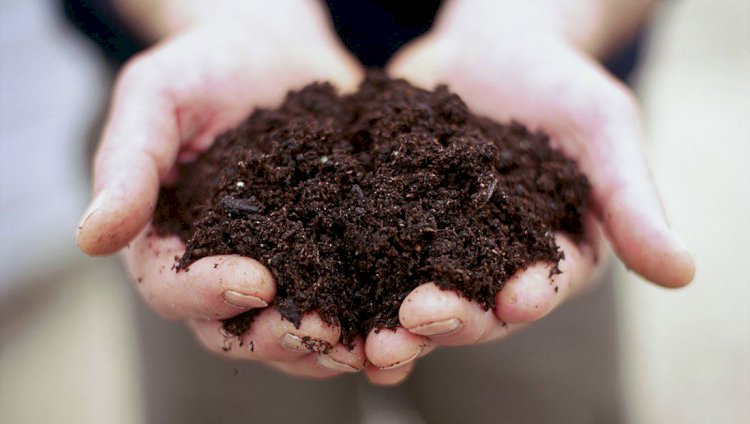SOIL

Soils of India
Soil can be defined as a mixture of small rock particles/debris and organic materials/ humus that develop on the earth’s surface and support the growth of plants.
Soil Classification – Urvara vs Usara:
In India, soil had been classified from the ancient period itself even though it was not as detailed as the modern classifications.
In the ancient period, the classification was based on only two things; whether the soil was fertile or sterile. Thus, the classification was:
- Urvara [fertile]
- Usara [sterile]
In the modern period, when men started to know about the various characteristics of soil, they began to classify soil based on texture, colour, moisture, etc.
- When the Soil Survey of India was established in 1956, they studied the soils of India and their characteristics.
- The National Bureau of Soil Survey and Land Use Planning, an institute under the control of the Indian Council of Agriculture Research did a lot of studies on Indian soil.
Classification of Soils of India
- Alluvial soil [43%]
- Red soil [18.5%]
- Black/regur soil [15%]
- Arid / desert soil
- Laterite soil
- Saline soil
- Peaty / marshy soil
- Forest soil
- Sub-mountain soil
- Snowfields
Alluvial soil:
- Mostly available soil in India (about 43%) covers an area of 143 sq. km.
- Widespread in northern plains and river valleys.
- In peninsular India, they are primarily found in deltas and estuaries.
- Humus, lime, and organic matter are present.
- Highly fertile.
- Indus-Ganga-Brahmaputhra plain, Narmada-Tapi plain etc are examples.
- They are depositional soil – transported and deposited by rivers, streams, etc.
- Sand content decreases from west to east of the country.
- New alluvium is termed as Khadar and old alluvium is termed as Bhangar.
- Color:Light Grey to Ash Grey.
- Texture:Sandy to silty loam or clay.
- Rich in: potash
- Poor in: phosphorous.
- Wheat, rice, maize, sugarcane, pulses, oilseed, etc. are cultivated mainly.
Red soil:
- Seen mainly in low-rainfall areas.
- Also known as Omnibus group.
- Porous, friable structure.
- Absence of lime, kankar (impure calcium carbonate).
- Deficient in: lime, phosphate, manganese, nitrogen, humus, and potash.
- Color: Red because of Ferric oxide. The lower layer is reddish-yellow or yellow.
- Texture:Sandy to clay and loamy.
- Wheat, cotton, pulses, tobacco, oilseeds, potatoes, etc. are cultivated.
Black soil / regur soil:
- Regur means cotton – the best soil for cotton cultivation.
- Most of the Deccan is occupied by Black soil.
- Mature soil.
- High water retaining capacity.
- Swells and will become sticky when wet and shrink when dried.
- Self-plowing is a characteristic of black soil as it develops wide cracks when dried.
- Rich in:Iron, lime, calcium, potassium, aluminum, and magnesium.
- Deficient in:Nitrogen, phosphorus, and organic matter.
- Color:Deep black to light black.
- Texture:
Laterite soil:
- Name from the Latin word ‘Later’ which means Brick.
- It becomes so soft when wet and so hard when dried.
- In the areas of high temperature and high rainfall.
- Formed as a result of high leaching.
- Lime and silica will be leached away from the soil.
- Organic matter in the soil will be removed fast by the bacteria as it is high temperature and humus will be taken quickly by the trees and other plants. Thus, humus content is low.
- Rich in: Iron and Aluminum
- Deficient in: Nitrogen, Potash, Potassium, Lime, Humus
- Color: Red color due to iron oxide.
- Rice, Ragi, Sugarcane, and Cashew nuts are cultivated mainly.
Desert / arid soil:
- Seen under Arid and Semi-Arid conditions.
- Deposited mainly by wind activities.
- High salt content.
- Lack of moisture and Humus.
- Kankar or Impure Calcium carbonate content is high which restricts the infiltration of water.
- Nitrogen is insufficient and Phosphate is normal.
- Texture:Sandy
- Color:Red to Brown.
Peaty / marshy soil:
- Areas of heavy rainfall and high humidity.
- The growth of vegetation is very low.
- A large quantity of dead organic matter/humus which makes the soil alkaline.
- Heavy soil with black color.
- Peaty and marshy soils are found in areas with high water tables, such as the Kerala backwaters and parts of northeastern India. They have high organic content but can be acidic.
- These soils can support wetland agriculture and are suitable for rice and aquatic crops.
Forest soil:
- Forest and hill soils are found in densely forested regions and higher altitudes. They are typically acidic and often have a shallow topsoil layer.
- These soils are essential for maintaining forest ecosystems but are not suitable for intensive agriculture.
Mountain soil:
- Immature soil with low humus and acidic.
- Mountain soils are found in hilly and mountainous regions, including the Himalayas. They are highly weathered and can vary in composition depending on local conditions.
- These soils are suitable for horticulture, tea, and temperate crops like apples and potatoes.
Saline and Alkaline Soils:
- Saline and alkaline soils are found in coastal areas and arid regions. They have high levels of salts and alkalis, making them unsuitable for most crops.
- These soils can be reclaimed for agriculture through drainage and soil amendments.
Reference: https://www.clearias.com

 Vatsal Suchde
Vatsal Suchde 




















